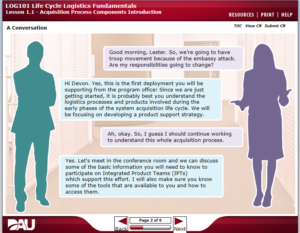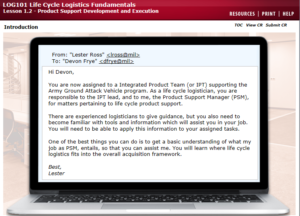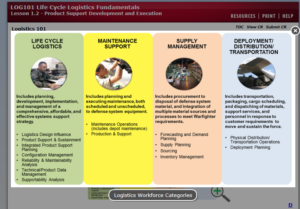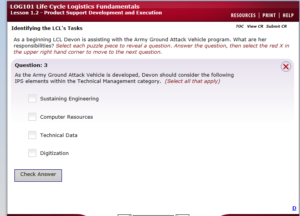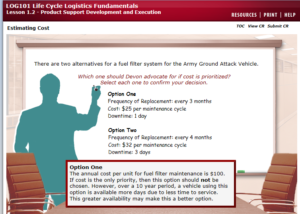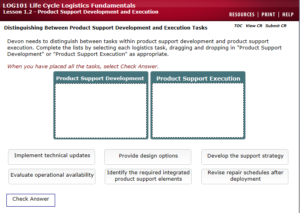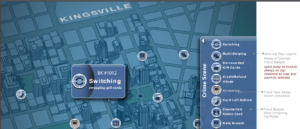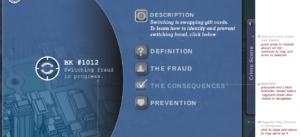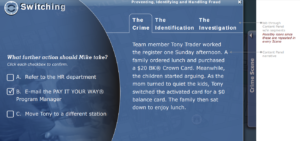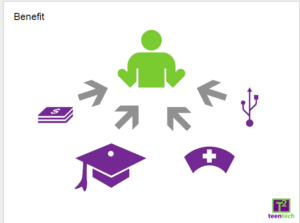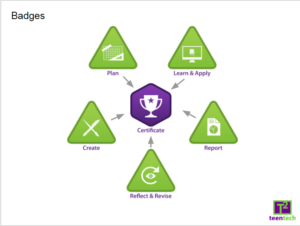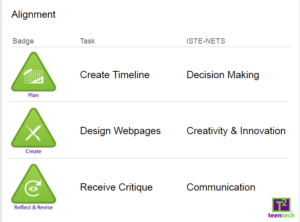Logistics 101
Lester, the manager, and Devon, the new hire, acted as guides through the five modules, with Devon, the new hire, gaining more expertise throughout the course. A conversation between them introduced each lesson, framing information to be covered within future responsibilities of the profession.
Lester’s emails to Devon further situated the information within a narrative.
Graphic organizers were used to make the information more understandable.
Assessments framed questions within the narrative structure established within the conversations and emails.
Activities within the lesson required learners to apply their understandings to tasks similar to what they might encounter in the field.
Multiple types of assessments were included and were framed so that learners used higher levels of Bloom’s Taxonomy.
Burger King
Each icon on the map represented a Burger King location that was dealing with credit card fraud. The learner could access the locations in any order. All 8 mini-scenarios had to be accessed and completed in order to earn the required certificate.
Within each mini-scenario, the learner encountered a consistent structure including Description, Definition, The Fraud– which described a realistic narrative, The Consequences, and Prevention.
Within “The Fraud” the narrative included descriptions of the crime, identification and investigation that a manager might actually encounter within their own restaurant. Included within this portion of the mini-scenario was a knowledge check.
Computers4Kids Teen Tech Badges
C4K identified 4 tracks for students to become proficient in in order to be ready for young adulthood: Career, Academics, Technology and Service. Students would be able to perform activities and complete tasks in order to earn badges in these areas.
As students earned badges, they would be able to work towards certificates. These certificates would require students to perform skills within 5 Critical Thinking Areas: Plan, Learn & Apply, Create, Reflect & Revise, and Report. Within the above Tracks and Critical Thinking Areas, students would have a great deal of latitude to select tasks and projects of their own choosing, including developing photo portfolios, assisting with classes, and creating websites.
These badges were created using the ISTE-NETS and the National Youth Employment Coalition‘s standards to provide under-performing students a measure to demonstrate out of school learning success. For some reflection on this experience read this post.
